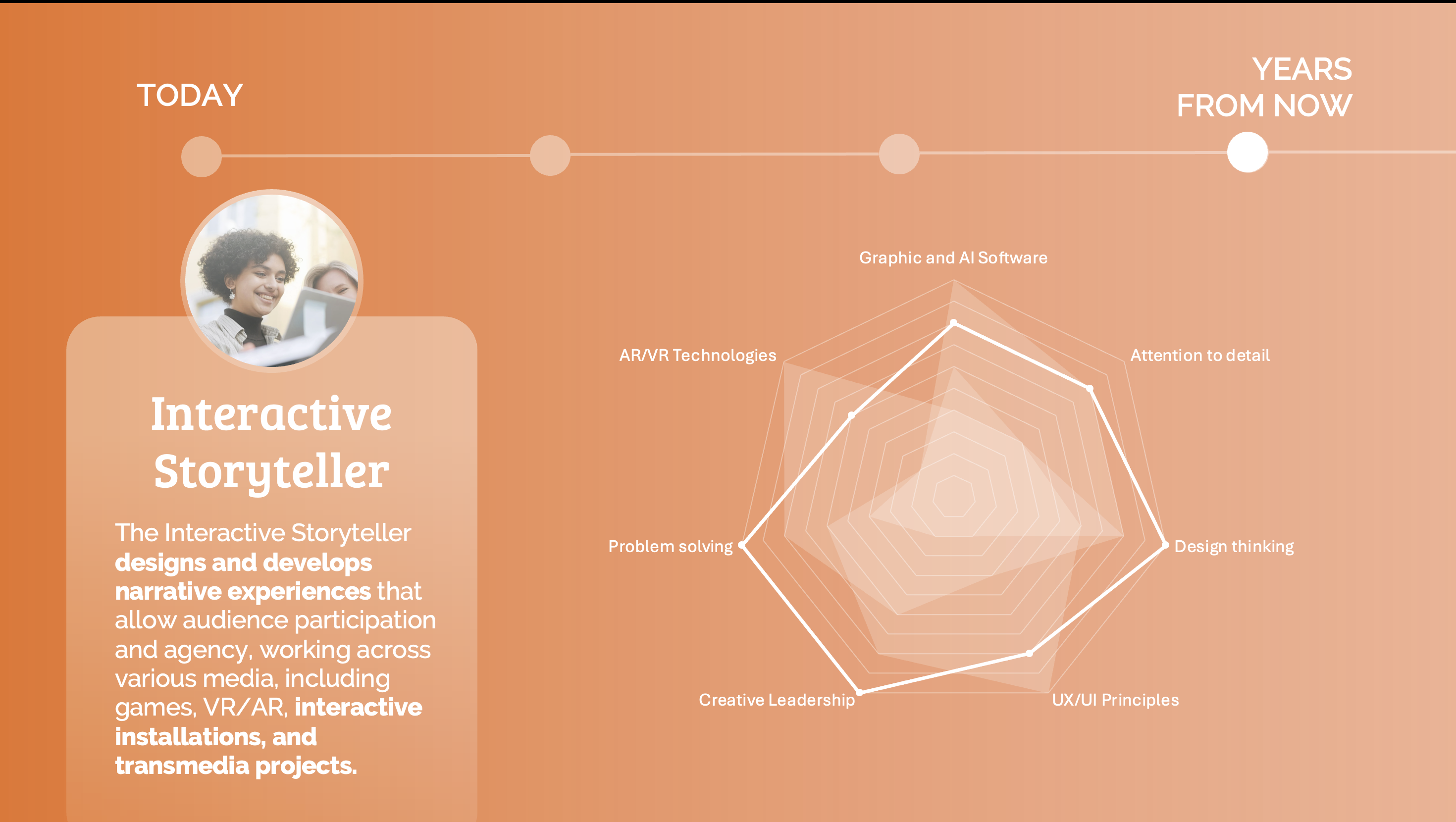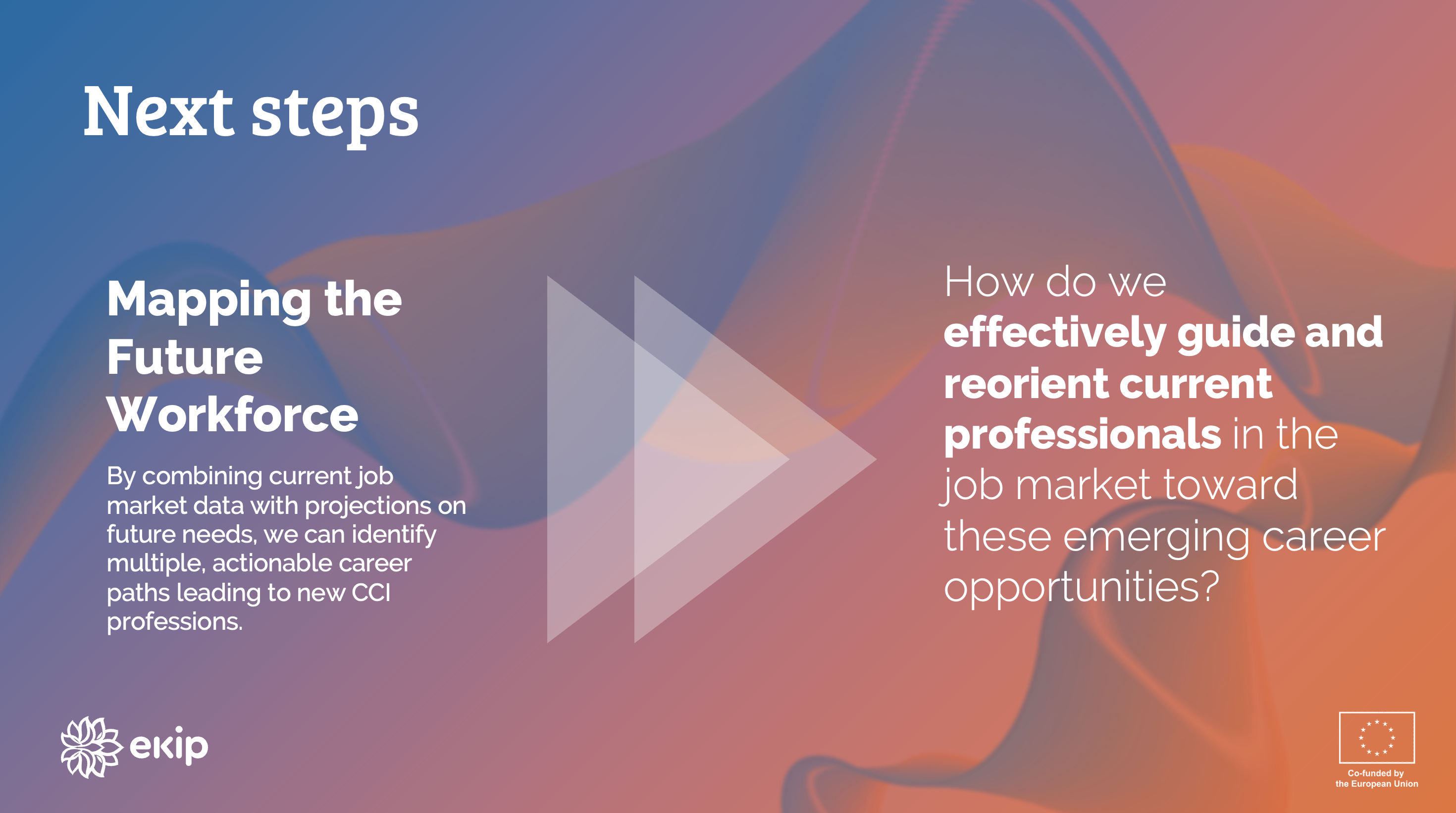The Cultural and Creative Industries (CCIs) are undergoing a rapid transformation, driven by emerging technologies like AI and immersive realities. This fast-moving landscape presents a crucial challenge: how do we effectively guide current professionals toward the emerging career opportunities of tomorrow? This is one of the questions we aim to tackle within the ekip project, the European Cultural and Creative Industries Innovation Policy Platform.
The EKIP initiative, funded by Horizon Europe, is dedicated to understanding and accelerating these transitions through research, policy, and collaboration. For each sector it studies, EKIP brings together policymakers, researchers, and creative practitioners to translate emerging needs into actionable frameworks for change.
Our foresight exercise, conducted within ekip's identification phase , addresses this challenge by mapping actionable career paths from the future back to the present. Our method employed social media listening to track real-time conversations across sectors, helping stakeholders anticipate change and enabling the co-creation of smarter innovation policies .

Our process began by defining "future creative personas", new professions in the CCIs identified by monitoring emerging skills and job mentions within European creative communities. These personas sparked vital conversations, but the practical need remained: how can today's practitioners evolve in this shifting market?
To bridge the gap between "future potential" and "present action," we employed a technique called backcasting. Unlike traditional forecasting, which projects current trends forward, backcasting starts with a desirable future state (in our case, the new creative persona) and works backward to identify the necessary milestones, skill pivots, and strategies to achieve that future from the present day. We combined these future visions with real-world data on current job roles to build practical career trajectories.

Case Study: Let's explore the career path leading to the Interactive Storyteller.
The Interactive Storyteller designs and develops narrative experiences that empower audience participation and agency. They work across a variety of media, including games, VR/AR, interactive installations, and transmedia projects, focusing on crafting branching narratives and dynamic dialogues that allow users to influence the story's direction and outcome.
The path to becoming an Interactive Storyteller can start from several existing professions, such as a Graphic Designer.
- A Graphic Designer today, focused on establishing mastery over visual communication, composition, and aesthetics and providing the fundamental visual literacy, can start pivoting their profile by moving through roles that progressively build the necessary "future skills" for interactive storytelling.

2. The first key step is transitioning to a UX Designer, pivoting the focus to functional design by acquiring skills in UX/UI Principles and Design Thinking to strategically address user behavior and digital flow.

3. This role then evolves into an Experience Designer, where the scope expands beyond the 2D screen into immersive and spatial design, demanding proficiency with AR/VR Technologies and developing system design for complex, non-linear experiences.

4. Finally, the ultimate role of the Interactive Storyteller combines this expertise to design and develop narrative experiences that allow audience participation and agency across various media like games and VR/AR.

By applying the backcasting methodology to different future professions (Interactive Storyteller, AI Ethicist, and Heritage Strategist), we identified several common, critical themes that policymakers, educators, and industry leaders must address to facilitate this career evolution in the CCIs:
- Access to Cutting-Edge Tools and Training (Upskilling): Professionals across all paths require accessible training in expensive, cutting-edge tools like AR/VR and advanced AI software. There is a need for constant support to integrate technical fundamentals (like NPL/ML basics) into traditional humanities and creative training.
- Networking and Cross-Sector Collaboration: The new roles demand intense collaboration between diverse expertise: creative leaders, problem solvers, technologists, and even legal teams. Incentivizing and funding cross-sector collaboration platforms and networks is highly important.
- Funding and Investment Models: To support the R&D and pilot projects needed for professionals to gain experience in these capital-expensive fields, there is a critical need for long-term financial products and grant structures.
The backcasting process proves that the path to future CCI professions is not a leap, but a guided series of skill pivots and strategic upskilling. The next step is to use this map to actively guide and reorient current professionals toward these emerging opportunities.



